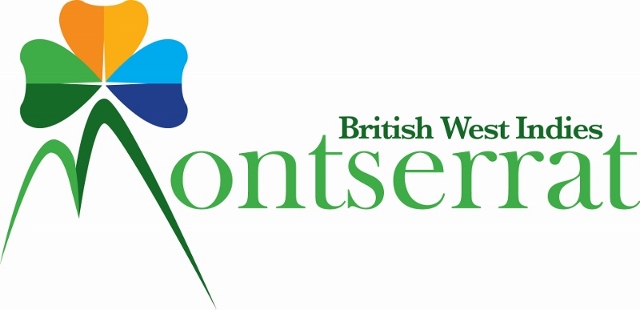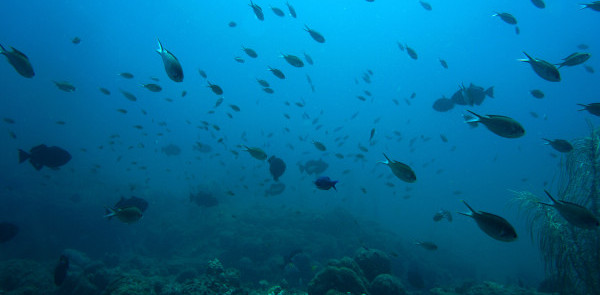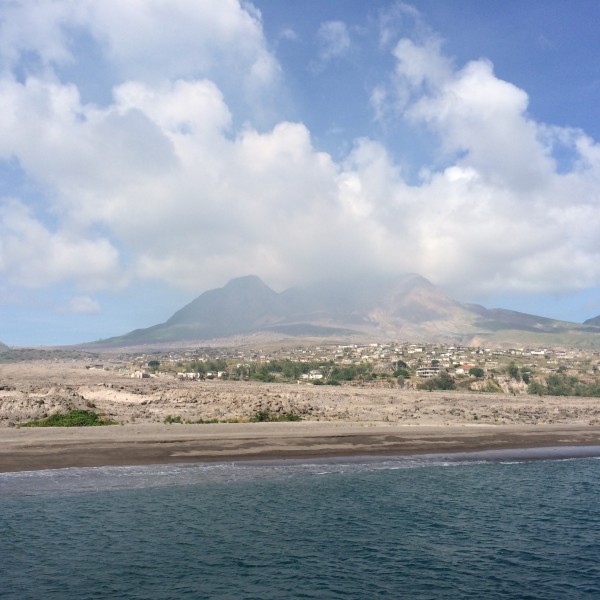Dispatch from the field, by Waitt Institute Science Manager Andy Estep:
If you’re a geology nerd like me, hearing of Montserrat makes you think “the Emerald Isle of the Caribbean, precariously perched on the Lesser Antilles Volcanic Arc along the eastern subduction zone of the Caribbean plate.” The incredible volcanology that has been forming and shaping Montserrat since the Pleistocene is fascinating. But as a geologist who has become a marine biologist, I can tell you Montserrat is also very alive and fascinating underwater.
As Science Manager of the Waitt Institute, I was in Montserrat recently working with the government and community on next steps for Blue Halo Montserrat. I also had a more specific mission for this trip: photographing large sections of the coral reef to be able to characterize their current state. This will give us a baseline for what the reefs look like now so we can understand why and how they change in the future.
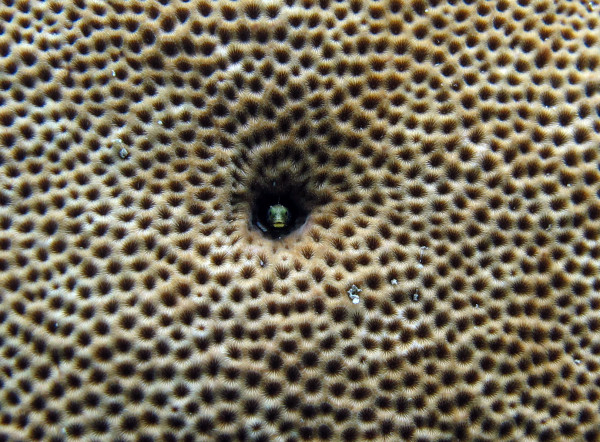
A secretary blenny (Acanthemblemaria maria) pokes its head out of a worm tube in a massive star coral (Siderastrea siderea). Photo: Dr. Phil Matich
Nathaniel Hanna-Holloway, a masters student at Scripps Institution of Oceanography (SIO), led the research, and Chad Koll (another SIO masters student), Dr. Phillip Matich of Florida International University, and Stephanie Roach (Waitt Institute’s Program Manager) and I assisted.
We went on 42 dives, took nearly 100,000 high-resolution photos of large sections the reefs, and had our eyes opened to the diverse and robust coral reef communities of Montserrat. These photos are being stitched together into large “photomosaics” of the reefs.
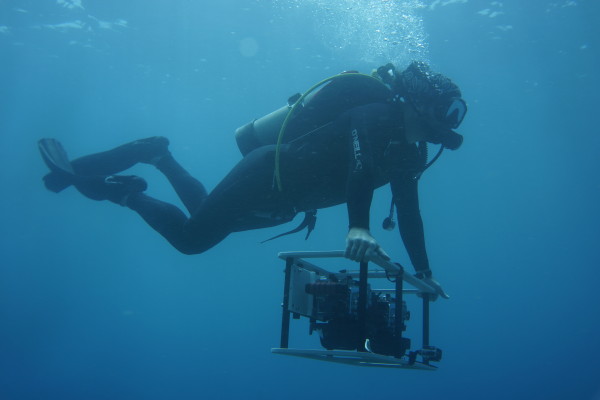
Andy Estep, Waitt Institute Science Manager, swims the camera rig over the reef to collect images that will be used to generate photomosaics. Photo: Dr. Phil Matich
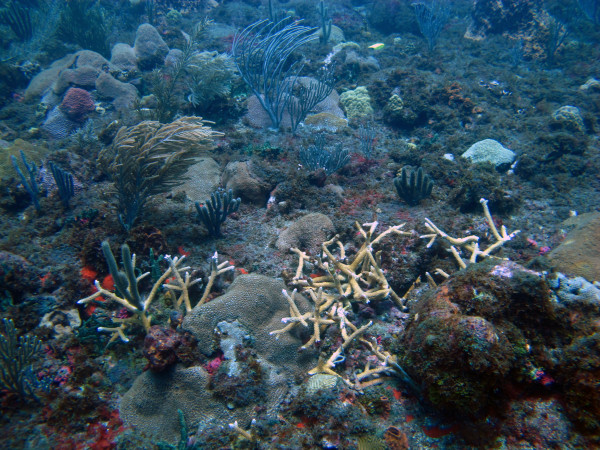
The orange, branching staghorn coral (Acropora cervicornis), pictured here among a host of other hard and soft coral species, is listed as threatened under the U.S. Endangered Species Act. Photo: Dr. Phil Matich
This is part of a larger effort by the Sandin Lab at SIO, to create photomosaics of coral reefs on 100 islands around the world. We are working with them on this research in Barbuda and Curaçao, our other two Blue Halo Initiative sites.
The health of Caribbean coral reefs has declined dramatically in the last few decades, but during our week of diving around Montserrat we saw a few exciting signs of hope. Here are my initial observations, based on almost a decade of working and diving in the Caribbean:
Coral cover (i.e., the percent of the reef covered in living corals) is around 10-25%. For context, many Caribbean reefs once had more than 50% coral cover and now have less than 5%! On Montserrat, many of the corals are babies, a sign of regrowth and recovery.
There were a lot of juvenile reef fish, again a sign of populations that can rebuild and recover.
Coral species diversity is relatively high, and includes six of the seven Caribbean coral species designated as threatened under the U.S. Endangered Species Act.
Diversity of reef fish appears to be relatively high as well.
There are deep reefs (at 100-150 feet) with abundant living coral and really interesting structure and shapes.
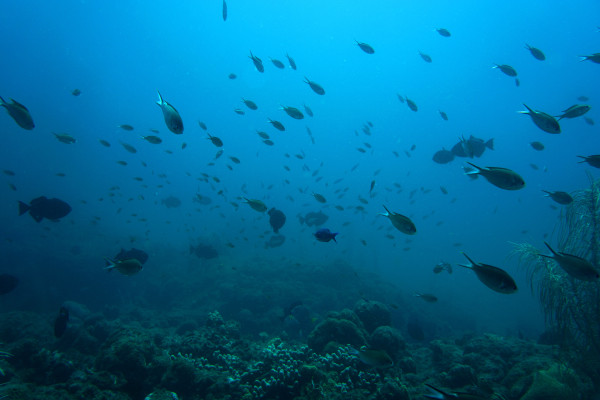
A large school of Brown Chromis (Chromis multilineata) and Black Durgeons (Melichthys niger) swimming above a coral reef. One day, we hope to see large parrotfish, snappers, and groupers in this school. Photo: Andy Estep
Reflecting upon this trip, resilience is the word that comes to mind for the people and natural resources of Montserrat, which was dealt a one-two punch by Hurricane Hugo in 1988 and then again by the eruptions of the Soufrière Hills volcano through the mid 1990’s. Around the island, on land and underwater, are signs of strength, regrowth, and a bright future.
We’re looking forward to coming back later this year for a full assessment of the coral reefs and fisheries, and continuing to build our partnership with the people of Montserrat to support them as they develop a plan to use their ocean without using it up.
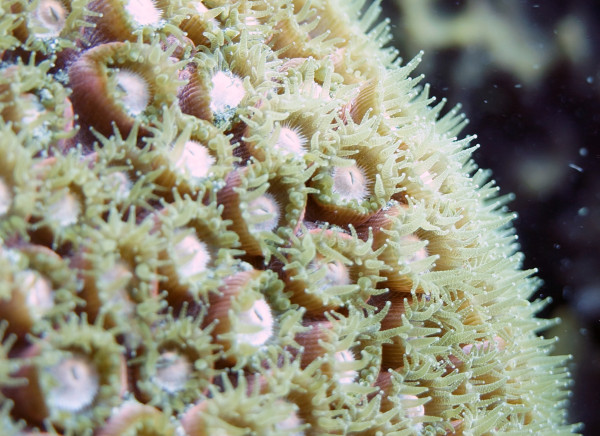
Polyps open up and tentacles extend from the great star coral (Montastraea cavernosa) as it feeds on zooplankton and detritus. Photo: Andy Estep
To follow the progress of Blue Halo Montserrat and the overall work of the Waitt Institute, find us on Facebook, Twitter, Instagram, Tumblr, or sign up for our newsletter.
